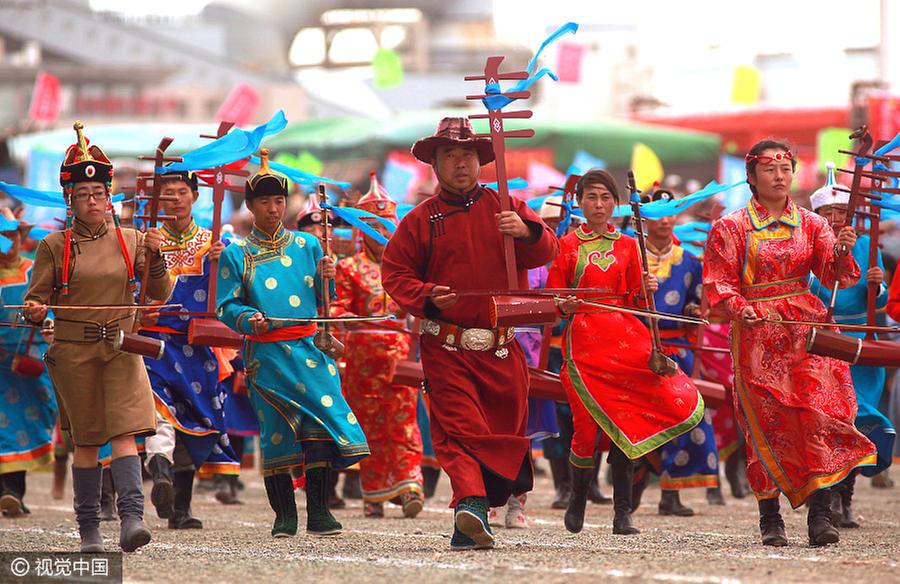Inner Mongolia's cultural heritage lives on
chinadaily.com.cn | Updated: 2017-04-19 16:14
 |
| People participate in a Nadam fair held in Inner Mongolia. [Photo/VCG] |
Nadam fair
Nadam fair, a huge traditional Mongolian festival, originated in the early days of the 13th century. Nadam means "entertainment' or "recreation" in the Mongolian language.
A "Huli Letai" (big meeting) was held by Mongol leaders every month to make laws and regulations and appoint and remove officials. They also took part in a large Nadam Fair. In 1206, a grand Nadam Fair was held when Genghis Khan was elected as the Mongolian Khan.
Since the first fair, the "three skills" of wrestling, horse-racing and archery, have been a central part of the Nadam activities. In the past, winners of the three sports would be given horses, camels, sheep, brick tea and silk as prizes.
Nowadays, more activities have been added, such as polo, horsemanship, track and field, and other ball competitions.
It is always held in summer or autumn (usually July or August) when the grasslands are beautiful and flocks and herds are ready for tallow. It can run for up to a week.
























